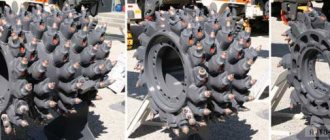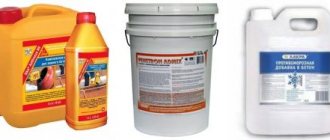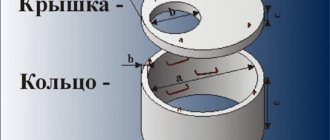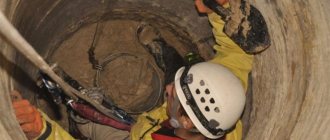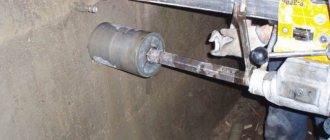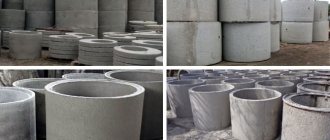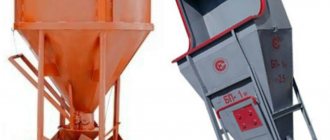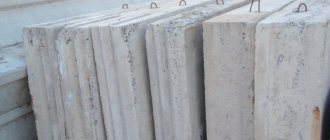To this day, they are dug in plots to provide themselves with water for household needs. They are indispensable in summer cottages, where water is centralized and supplied in limited quantities according to a schedule.
But even with the construction of a country house and the arrangement of a well, wells do not lose their relevance. By lowering a submersible pump into them, it is convenient to use water for irrigation, especially when the groundwater level is high in the area. It is important not only to protect children and animals by closing it with a lid, but also to give it aesthetics. This article will talk about how to make a well head with your own hands. Traditional and modern finishing materials allow you to create not only functional, but also beautiful wells.
They fit harmoniously into any landscape design, becoming its decoration. In any case, it is not only beautiful, but also functional, as additional insulation is provided. When choosing a well design, you should rely on the stylistic direction that already exists on the site.
Wells are dug at the dacha, where water is supplied in limited quantities. Such wells can be part of a country house project. Water is extracted from them using a submersible pump. The well head, or house, is decorated in different styles, taking into account the features of the exterior. It ensures safe use of the well, prevents water pollution, and also serves an aesthetic function.
In addition to traditional style solutions, there are many design options for the well head. They are distinguished by their versatility, which allows them to look good in any landscape design. But no matter how beautifully the head of the well is made, in order for it to look harmonious, it must be surrounded by plants.
To do this, you can plant low-growing flowering shrubs around it or create new compositions from flowering annuals every year. In addition, flowers can be placed in large flowerpots. In this case, they can be rearranged several times during the summer.
Plant compositions are suitable for a well made in any style. Articles about repair, construction, building materials. Copying information from the site is possible only with the permission of the editors or with a direct link to the source. Legal justification.
Main menu. Site search. Forgot your password? How to choose interior doors.
Types of sewer wells
In this way, stone wells of any type of sewerage system are installed: domestic, industrial, stormwater or drainage. But each design has its own nuances:. A more complex configuration determines the volumes and SNiP requirements for differential wells. In addition to arranging the tray, it is necessary to do the following:.
Current requirements for sewer wells
Otherwise, with regard to the installation of the shaft, base, floors - the rules are the same as the previous ones. The exception is a riser drop well - it requires installation of a metal pipe at the base, which will prevent the destruction of the concrete structure. A funnel is required for compensatory discharge processes formed in the riser due to the rapid movement of flows. Do-it-yourself creation of drop wells in private areas is not recommended, unless it is a pipeline with a diameter of 60 cm and a level difference of up to 3 m.
The same reasons can serve as a reasonable justification for installing a drop well on your own property.
General information
Any water drainage system must have at least one well or reservoir. Many country property owners prefer autonomous sewer systems. But it is worth considering that this is a rather complex standard engineering project that requires certain knowledge and skills.
The key element of such a system is sewer wells, which can have any shape - round, square, rectangular. They can be made of different materials, be it concrete rings, bricks or ready-made plastic containers.
From a constructive point of view, the design of sewer wells is represented by several components:
- basis;
- tray;
- working chamber;
- neck;
- hatch.
Now it’s worth getting acquainted with the main types of sewer wells, which are most often installed by many private sector owners.
Types of wells
Such structures are divided into several types:
- Observations.
- Rotary.
- Drops.
- Overflow.
- Cumulative.
- Filtration.
At the same time, each of these wells performs its duties. If the site has a simple sewerage system, then only one storage well is sufficient. At the same time, with a more complex scheme, it will be necessary to study the device and installation features of each of all the above types.
Main types of sewer wells
Today there are the following types of wells:
- Corner well
- Passage well
- Rotary sewer well
- Control well
- Station well
The main tasks to be performed by the structure in future work are determined based on the installation of the well.
The main and primary task for any sewer hatch is monitoring the entire operation of the sewer system.
With the help of sewer wells, you can perform tasks such as:
- Reducing the distance in an adjacent system;
- Elimination of differences in inlet and outlet pipes;
- System cleaning;
- Collection of dirt and waste that collects in wells.
Viewing structure
You may be interested in: Two-story house with a bay window: project, layout options, types of bay windows
The construction of a sewer inspection well should be understood as a shaft located above the main drainage line. Such structures make it possible to conduct a visual inspection of sewer pipes and, if necessary, carry out repair work or mechanical cleaning and flushing during operation.
Such mines are located in a straight line of the drainage system at a certain distance from each other. Typically this is 30 m, but the distance may vary depending on the diameter of the pipes. At the same time, the definition of “inspection well” may include shafts that are installed at turns or along the path of intersection of communications.
Blitz tips
- It is not recommended to make the trench depth too large , because you will need to add soil, which will subside over time. As a result, the highway may change the correct slope.
- To avoid damage to the pipeline, it is prohibited to place solid objects under the pipes during their installation .
- When choosing a site for the construction of a filtration or storage collector, it is necessary to provide for the possibility of equipment access to clean the structure.
- Despite the fact that a sewer septic tank is a wet type of well, its tightness must be ensured. This is necessary in order to minimize the penetration of wastewater into the environment. To waterproof the ring joint areas, special waterproof compounds are used.
- During the period of providing a waterproofing layer for 3 days, it is necessary to exclude the impact of mechanical loads and low temperatures on the surface. During this time, the treated areas should be regularly moistened using a regular sprayer. You can also cover the surface with a film, which helps reduce moisture evaporation.
housetronic.ru
Rotary shafts
They are installed in places where sharp turns of the channel are necessary. That is, more than 90°. The presence of such structures is mainly due to the fact that it is in these areas that active clogging of the system occurs. In addition, this design can be used as an inspection shaft, which makes it easy to clean a certain section of the pipe.
When installing a well system, it is often necessary to locate a septic tank or reservoir at a distance from several sources of wastewater. And this inevitably leads to twists and turns.
Drop structures
Such tanks are relevant in the case of arranging a complex system on a site with a slope. The installation of a differential sewer well is also necessary in the following cases:
If wastewater enters the well at high speed, the insulation or the structure itself may be damaged due to washout or impact loading. In turn, this design is also divided into several subtypes:
- An ordinary mine, in which the water supply is located in the upper part, while the outlet is in the lower part.
- A design that has a baffle and drain wall that slows down the flow rate.
- Short channels with a large degree of slope, in order, on the contrary, to increase the speed of the flow.
- A mine that includes multi-stage drops.
You may be interested in: House construction plan: stages, documents, materials, features and nuances
In this regard, slowing down the flow rate is the main purpose of the drop shaft.
Overflow type wells
Overflow sewer well devices are also called overflow septic tanks. Essentially, these are several storage tanks that are connected to each other through overflow pipes in the upper part.
The main purpose of such a structure is to collect sewage. In this case, insoluble contaminants accumulate at the bottom of the first tank. After this, the purified liquid is sent through inclined pipes to the next storage tank.
The system provides for the separation of solid and liquid phases of sewage. And the main feature of overflow wells is that their operation does not require auxiliary equipment or electricity.
Recommendations
In order for the process of constructing a septic tank to be successful, you need to consider a couple of simple tips:
- During the installation of the septic tank, you should not make sharp turns. The angle between the incoming and outgoing pipes must be at least ninety degrees. In this case, the turning radius must be at least equal to the diameter of the pipe.
- Laying along shelygs is possible if several pipes are laid, the diameter of each of which is different.
- The rotation must be at least equal to the diameter of the pipe.
Cumulative type
Such structures are essentially containers for collecting and storing drained water. Subsequently, it is pumped out with pumps, or special vacuum trucks can be used for the work.
Among other types and devices of sewer wells, this option is more preferable for private suburban areas. This is especially an advantageous solution when the central system is located too far away or is absent altogether. Based on volume, such structures can be made of different materials. But most often these are reinforced concrete rings, large plastic containers, or it can simply be a monolithic concrete structure.
If the amount of wastewater is small, then this option of installing a plastic container is completely justified. The cost of the tank is not very high, and its installation can be done independently. In addition, there is no need to involve a professional team along with specialized equipment. It is enough to enlist the support of your friends, which will significantly simplify the task, since it will be difficult to cope alone.
Rules for using concrete septic tanks
The owner of the site on which the sewerage system is located must bear mandatory responsibility for the operation of this structure. The septic tank begins to function fully only a year after its construction. If you add starters, the process will speed up significantly.
Note : If the septic tank is working properly, there will be no smell of hydrogen sulfide. As for the color of precipitation, it will have a dark gray tint.
In order to monitor the level of precipitation, a wooden stick is lowered into the hole. If there are only twenty centimeters left to the pipe tee (outlet), then a special machine will be required. If there is silt, then you should not completely get rid of the sediment.
It is also necessary to monitor the degree of purification of the liquid that penetrates the drainage structure. If the water is clear and odorless, then it is normal.
In winter, to prevent the well from freezing, the hatch is insulated.
Filtration variety
Another type and design of a sewer well that is worthy of attention. Filtration structures or shafts can be either open or closed. Moreover, both options are intended for the separation of wastewater, and they also allow you to separate large debris and heavy substances from the water itself.
An open pit is a structure made using perforated concrete blocks. Meanwhile, the liquid goes into the ground through special holes. As for heavy substances, they remain in such a structure and are then removed using special equipment and sent for disposal or burial.
List of rules and requirements
The layout and construction of sewerage systems is regulated by special rules and regulations, as well as regulations (SNiP). In this case, the most important point is the distance between sewer wells. The dimensions of the pipeline depend on this parameter.
In other words, if the pipe has a diameter of 150 mm, then the step between the wells should be 35 meters. With a diameter of 200 mm, the step is correspondingly different - 50 meters. Similar requirements are given in another, no less important document - a technological map for the installation of sewer wells.
In fact, the SNiP requirements for the construction of sewer wells are a kind of instruction that sets out the rules for installing sewer lines. Also, such a document contains technical requirements that apply to various well designs, taking into account sanitary and technical safety standards.
The fundamental requirements of SNiP can be considered:
- Wells should be located away from sources of drinking water and other water supply systems.
- The mines must be at a certain distance from residential buildings and neighboring areas.
- The volume of the well should be regulated by the number of people living, as well as the average volume of wastewater over a certain period of time.
- The depth of the pit for installing the tank should be within 2.5 meters, no more. As for its diameter, it should exceed the dimensions of the structure itself by no more than 0.5 meters.
- If the site has a high groundwater level, then according to SNiP, the construction of a sewer well must include waterproofing.
- The bottom of the pit should be covered with a sand cushion at least 100 mm thick.
- Directly between the bottom of the tank and the bottom of the pipe there should be a gap of 600 mm.
You may be interested in: Thickness of self-leveling floor: maximum and recommended. Do-it-yourself self-leveling floor: step-by-step instructions
The installation of a concrete sewer well is regulated by GOST. While for the installation of communications made of plastic and polymers, a reference to the technical specifications is responsible. Concrete or stone structures can be prefabricated or monolithic. Filter structures are built mainly from rubble stone. As for polymer materials, for sewer systems it is permissible to use polypropylene, polyvinyl chloride, and dense polyethylene.
Modern communications, which are installed in urban construction or the private sector, can combine elements from different materials. Such decisions do not contradict building regulations.
Types of bottom
- Round bottom - such wells are often called barrels.
- Quadrangular bottom - made in the shape of a square or rectangle.
For a square well
The area of a circle is calculated using the following formula - S = πR2. Based on this, it turns out that the volume for a well with a working pit volume of 3 square meters. m will be equal to 3 m3 = 2.3 m * 3.14 * R2.
Having made some calculations, we find the value of R, it is equal to 0.65 m, and accordingly a hole with a depth of 3 meters should have a diameter of 1.3 meters. In the case of a rectangular or square well 3m deep. its bottom area is 2.3 m.
The depth of the sewer well is calculated taking into account the additional depth, width and height, which will later be used for reinforcing walls that protect the well from the crumbling earth ball. Installation of protective walls can be made of the following material:
- Reinforced concrete rings.
- Concrete.
- Brick.
The bottom of the pit is covered with layers of sand and crushed stone, the thickness of which is at least 30-40 cm. Taking into account the brickwork, which is 12 cm, the width of the pit should be increased by 25 cm, and the depth by 40 cm - a layer of crushed stone and sand. When making calculations, rounding up is possible; rounding down is unacceptable. It should be remembered that the depth of the sewer well is one of the most important indicators, the calculations of which require special attention.
Features of different types of wells
In accordance with the same norms and rules (SNiP), the construction of a sewer well must take into account the installation features of each type, based on their purpose and the materials used. The filter well is designed to clean wastewater from harmful impurities. To do this, the bottom of the collector must be covered with crushed stone, and the layer thickness is at least 1000 mm. After this, only its perimeter should be filled with concrete mortar. This will avoid the destruction of the base and the removal of water through the center of the circle, where, in fact, drainage and cleaning are carried out.
The inspection well is usually constructed from a pipe with a diameter of 460 mm. This size will allow you to clean the tank with a hose. If there is a need to descend into the internal cavity of the structure, then the diameter of the pipe must be at least 925 mm. If an inspection collector is being built in an area where there is no road surface, a blind area is required to drain wastewater. With a high-quality road surface, installation can be carried out 70 mm above the soil surface.
According to SNiP, a storage-type sewer well should be installed in a low-lying area to facilitate the flow of water into the reservoir. The structure is located at a depth of 3000 to 6500 mm, and the number of rings is no more than 7. Special recesses are made at the bottom of the tank, which are then filled with sand or crushed stone. The water from such a facility is quite suitable for domestic needs.
What types of wells are there?
A reinforced concrete well can vary in volume, size, and components. Everyone determines the operating conditions and functions that the system must perform. So, a water well will require one set of requirements, while a storm or sewer well will have completely different requirements. But in any case, the standard configuration of the design is taken as a basis.
Structure
Any reinforced concrete well consists of the following basic elements: bottom, wall rings, cover, hatch. In road construction, wells with floor slabs are used; in sewer systems, square containers are sometimes installed, but this is rather an exception to the rule.
The main elements of a reinforced concrete well:
- Concrete wall rings are made in the format of thin-walled through cylindrical hollow elements, which act as the basis of the structure.
- Well covers are also floor slabs that protect the containers inside from contamination and prevent people from falling into the well. The design of the slab must include a hole for a hatch, which is necessary to provide free access to the inside of the container.
- Bottom slabs are reinforced concrete monolithic slabs that become the bottom of the well and at the same time protect it from groundwater.
- Support rings are special additional elements designed to form wells of non-standard height (usually used in road construction). The sizes correspond to standard rings, but their height is smaller.
- Base plates - have a rectangular shape, have an outlet hole in the middle of a rectangular / round shape, which is then covered with a rectangular grille or a round hatch. Thanks to the shape of the base plate, it is possible to protect the well from possible destruction by distributing the load over the entire perimeter of the element and reducing the load on the walls of the well.
- Sewer wells belong to a separate group of products, since these standardized cylindrical structures are used in the installation of underground water/gas supply and sewerage systems. Inside the well there is a metal mesh 0.6-1 millimeter thick.
- Cast iron hatches - do not belong to reinforced concrete products, but are used in the installation of wells to protect them from unauthorized or accidental entry.
This is what ordinary water supply or sewer wells look like, but other design options can also be used. So, sometimes instead of a bottom, a ring with a bottom is installed or the site is concreted by pouring. If the well is located on the roadway, it is covered not with a lid, but with a rectangular base plate.
Storm drainage systems are often formed using standardized reinforced concrete sewer wells, made in the form of a solid cylindrical block with a bottom, a ready-made hole for a pipe, and reinforced with a metal mesh.
Purpose
Based on the type of systems for the installation of which reinforced concrete wells are used, there are three main types of products.
Types of reinforced concrete wells by type of system:
- Plumbing - act as elements of heat/water supply, water supply networks, are used for installing valves (shut-off valves) used in regulating the flow of various liquids, measuring valves, fire hydrants, etc.
- Wells for sewerage (treatment, drainage) - they are needed to create sewerage systems in places where pipes change, at bends, etc. Important in the fight against groundwater, which can destroy the foundation.
- Gas pipelines – used as elements of various types of main gas pipelines.
What types of wells are there by function and purpose:
- Inspection sewer lines are needed where there are turns in pipelines, connections of 2-3 networks, there is a transition from one pipe diameter to another, or long sections of the route are simply marked. Wells are used to perform preventive inspection of pipes and cleaning. Rules for installing wells: pipe diameter up to 30 centimeters - every 35 meters, up to 60 centimeters - every 50 meters, 60-140 centimeters - every 75 meters, if pipes with a diameter of more than 140 centimeters - wells are needed every 150 meters.
- Storm drains are needed for collecting and draining rain and melt water from the roadway of sidewalks and streets. In their installation, standardized wells are usually used.
- Settling tanks (cesspools, also known as septic tanks) are used to clean the sewerage system from suspended particles. Installed only in domestic and industrial autonomous systems.
- Chamber wells - they are installed where the sewerage system intersects with other underground networks. Other lines must be located higher than sewer lines.
- Drop wells (extinguishing wells) - they are needed to reduce the speed of water flow in a gravity system. Falling water can produce considerable loads, so the depth of wells is made up to 4 meters. For large-diameter pipelines, several wells are made at once at a distance of 2 meters from each other.
- Filter (drainage) wells – designed for wastewater treatment. They do not have a sealed bottom, but there is a drainage base and perforations are made in the walls of the rings.
- A rectangular concrete sewer well is rare, but is used in some systems. The internal volume of such products is used as rationally as possible, but there are certain difficulties in installation, so rectangular structures are used for installing large-diameter pipelines.
For autonomous home systems, pipelines are usually designed with a maximum diameter of 30 centimeters, and wells are made from round rings of a meter in diameter. In a private home, large-diameter rings are used to arrange a mini-pool or cellar.
All standardized and prefabricated products used in the creation of sewer and drainage systems are created in accordance with GOST 8020 from concrete class B15-B22.5, the frost resistance level is at least F150 (the number of freezing/thawing cycles that a reinforced concrete product can withstand without destruction and deterioration of properties) .
Plastic wells - a modern and profitable solution
In relation to a private suburban area, plastic wells are most suitable for arranging a well system. This choice is due to the presence of certain design features, which are also advantages. In particular, we are talking about the following:
- Replacement of the bottom tray.
- The connection of the pipes to the well structure is carried out using a seamless method. Due to this, a high degree of tightness is achieved. In this regard, the scope of work on sealing seams is significantly reduced.
- The construction of a plastic sewer well in a private house is more than justified, since the advantages of such structures in comparison with metal, concrete and ceramic analogues are quite obvious. They are most often used in the creation of urban communications.
- Manufacturers of plastic wells create all the necessary and favorable conditions. The pipes are created in such a way that the time for connecting pipes is noticeably reduced. In addition, such structures already initially have rubber seals at the pipe connection points. When using waterproofing materials, a reliable connection is ensured that can last for several decades without leaking.
- The structure of the well itself is made seamless, which increases its tightness and also reduces the cost of installation work. Essentially, it is a large pipe with a bottom that has one or more inlet pipes.
- Well, in fact, without installing a sewer hatch, sediment or foreign objects would get inside. In this regard, the lid is also made airtight.
In other words, the plastic structure of the well is an economical and environmentally friendly option in the process of installing a sewer system. Using this product, you can monitor and maintain sanitary sewer networks.
How to properly install a drain well
Before installing a sewer well near a private house, it is necessary to develop a project with the exact location of each element of the system. A simple plan on a piece of paper is not enough. The design must be carried out by a qualified specialist who will immediately take into account all the nuances and rules.
Installation of input into a plastic well
A simplified well installation process looks like this:
- Preparation of a pit according to the dimensions of the selected structure with a depth below the soil freezing level.
- Forming a gravel cushion 20–30 cm thick at the bottom for a sealed tank and 40–50 cm for a septic tank drainage chamber.
- Laying a concrete base slab on gravel.
- Installation of concrete rings or plastic structures.
- Pipe connection.
- Closing the well with a lid with a hatch and a ventilation pipe.
- Backfilling of pits and pipeline trenches.
When using bricks or reinforced concrete rings, special attention during installation should be given to sealing the well from the inside. All joints and seams must be coated with cement mortar and bitumen. Chambers with drainage do not need tightness at all. The more holes there are in them at the bottom and sides, the faster the drainage into the ground will occur.
Important! Well structures made of plastic need a heavy “anchor”, otherwise they can be squeezed out of the soil during floods. Most often, this clamp is made in the form of a concrete slab, which has a special hook for attaching a plastic well.
Sewage well connection diagram
It is imperative to install a water trap in the filtration and differential well, which will dampen the energy of the water flow and will not allow it to destroy the body or drainage cushion.
The ventilation pipe should rise 0.6–0.7 meters above the ground. This is the only way it will function correctly and prevent the accumulation of explosive gases formed during the decomposition of organic matter inside.
To avoid freezing, the well must be covered with a layer of soil at least half a meter thick at the end of installation. If pouring such a cover from the ground is problematic, then you will have to insulate the structure with polystyrene foam.
Everything is quite simple, the work can be done even alone. But if the sewerage system is long and the septic tank is far from the house, then it is better to use an excavator to speed up the excavation.
Features of choosing a plastic well
We have already become familiar with the features of plastic wells (aka advantages), now we need to consider important basic factors that will allow us to make the right choice of the desired design.
In particular, it is necessary to pay attention to certain parameters.
- Diameter and height - the well design can be deep or wide. In this case, it is worth taking into account the features of the sewer system itself, including the location of the future structure in accordance with the rules for constructing sewer wells.
- Shape - usually most wells are cylindrical, but there may be other options. At the same time, the only type that is best not to be used for a storage structure is square tanks. Such wells have ribs, which is due to their peculiarity. In such places, sediment is deposited, and removing it is quite problematic, if not almost impossible.
- Displacement – this indicator also deserves attention. Taking into account the average amount of sewage during the day, as well as the volume of the storage tank, you can determine how often it will have to be pumped out with a sewer truck.
- Surface type – smooth or corrugated. Both have their advantages and disadvantages. As an example, the corrugated type of surface has greater elasticity and can withstand greater pressure than the regular type. At the same time, dirt often accumulates in existing small recesses, and it is very difficult to remove it from there.
- Wall thickness - this parameter is important when constructing a concrete tray in a sewer well. It can vary over a fairly wide range. But the thicker the walls of the well, the higher its strength characteristics. But there is also a downside to the coin - an increase in thickness inevitably leads to an increase in the weight and cost of the structure.
In addition, you can take a closer look at what type of plastic is used in the production of a particular well. This point is not so significant, but certain performance properties depend on it.
What types of necks and rings for wells can be
Necks and rings can be made from:
- Reinforced concrete.
- Plastic.
Neck made of plastic
Type of concrete neck
It all depends on what type of well structure.
Functions of the well neck
The neck can be installed on any type of structure. They are used not only for the construction of water supply or sewer wells. They are also widely used for manholes or chambers. So:
- The shape of the neck can be cone-shaped. At the bottom, its size will correspond to the diameter of the ring. The top size is smaller. This creates ease of use.
- Necks for water wells are used to protect the structure from branches or leaves getting into it, which can form rotting processes or simply spoil the well water.
- In sewer pipes, they serve as protection against unpleasant odors. Thanks to the cone-shaped shape, air masses will not rise as efficiently from the bottom of the structure.
- Also, the necks provide ease of use of the structures. Due to this, the outer diameter of the well is reduced and the hatch itself will be smaller than the diameter of the structure itself.
- The necks do not interfere with the use of the site and do not cause difficulties in using the structure itself.
Wells made of reinforced concrete rings
Such structures are in great demand among most utilities involved in the maintenance and installation of underground pipelines. In addition, they are used in the construction of drainage and storm sewer systems and collectors. Is it worth mentioning that this is an ideal option for a home sewer system on your private country plot? In addition, this material has no analogues in its field.
Due to its high performance qualities, the technology for constructing a sewer well from concrete rings is suitable for implementation in any climatic zone. The wide range of applications of reinforced concrete rings, including their enormous popularity, is due to a rather impressive list of advantages:
- Affordable price.
- Installation can be carried out in a short period of time.
- Waterproofing is easy.
- High strength characteristics.
- Durability of the structure.
- The shapes are characterized by correct geometry.
In addition, the reinforced concrete rings fit quite tightly to each other, and the resulting gaps can be eliminated easily and quickly. Due to this, a high degree of sealing is achieved.
At the same time, the device b. sewer wells are not without their drawbacks, although, fortunately, there are not many of them:
- reinforced concrete rings are characterized by low resistance to splitting;
- in addition, the rings are prone to cracking;
- installation without the use of specialized equipment is simply impossible;
- Due to the large weight of the rings, the costs of delivery and installation increase.
You may be interested in: Brick arch: design features, shapes and photos
At the same time, if you analyze all the pros and cons of such a structure, it becomes clear that this option largely justifies itself.
Technology for constructing a well from reinforced concrete rings
Erection of a structure on your site is a rather serious undertaking and therefore requires some preparation. The entire technology for constructing a sewer well from concrete rings can be divided into several steps.
- First, you need to draw up a drawing of a sewer system diagram, which should indicate the entire layout, including the location of the collector itself.
- The construction site is cleared of debris and foreign objects.
- At the construction site, it is necessary to organize a temporary road for the involved equipment.
- A pit and trench are being dug.
- The bottom of the pit is cleaned and leveled.
After this, you can proceed directly to constructing the well. To do this, you should arm yourself with the following algorithm, which is also divided into several important stages.
Step 1. It is necessary to remove the soil from the internal contour so that the structure can be leveled horizontally. To avoid errors, it is worth connecting a level to this process.
Step 2. Install the first ring, after which it is necessary to make holes in its walls that will be intended for pipes. In this case, they should be inserted into the ring itself at a distance of no more than 100 mm. The hole around the circumference of the pipes must be sealed with a solution.
Step 3. At this stage, a tray is installed in the sewer well (SNiP allows this and is even recommended). Otherwise it is called a gutter, which will be located from the entrance of the pipe to the exit. Its cross-section must correspond to the diameter of the pipes. The gutter can be made from part of a sewer pipe.
Step 4. Now another ring is installed, and you need to make sure that the locks on the inside are at the same level. All other reinforced concrete elements are installed in the same order.
Step 5. After installing the last ring, the bottom of the structure is concreted, and the joints of the rings are sealed using a sand-cement mixture. The arrangement of a filtering septic tank at this stage looks a little different - instead of filling the bottom with concrete mortar, it is filled with crushed stone or crushed brick. The thickness of such a layer must be at least 500 mm.
Step 6. Now the entire structure is covered with a concrete slab with a hatch. Or, as an option, install a frame with a hole and fill it with concrete mixture.
Step 7. Upon completion of the installation of the structure, the technology for installing sewer wells involves laying a pipeline. This is done at a depth of 600-700 mm with a slope of 20 mm and meter increments.
Step 8. At this stage, the structure is tested throughout the day. This is done as follows - the collector is filled with water, and the ends of the pipes are closed with plugs.
Step 9. Upon completion of successful testing, the outer walls of the concrete tank are covered with earth and thoroughly compacted.
Step 10. We can say that this is the final stage at which a concrete blind area is made around the neck. Its width is 1500 mm.
Installation of settling tanks
By design, sedimentation tanks are divided into vertical and horizontal. Their installation varies significantly.
Reinforced concrete is mainly used to build a horizontal settling tank. The shape of the well resembles a rectangle with partitions for chambers (mostly there are two of them). The chambers collect solid accumulations in the form of sediment at the bottom. The upper edge of the installed settling tank is located no more than 60 cm in the ground, and the water level in the chamber should not reach the surface of 40 cm. The sedimentary bottom is poured with concrete at an angle.
Vertical design
The installation of a vertical settling tank is made of reinforced concrete rings, and the bottom is concreted in the form of a cone. Sewage that gets into such a structure leaves solid particles at the bottom, and the liquid, changing the direction of movement, enters the drain pipe. The water level is adjusted by the float along the height of the sides of the overflow channel.
The size of the sedimentary bottom is calculated at the rate of 0.8 liters of sediment per person per day. The sedimentary part should contain the sediment from the life processes of all people living in the room for two days. Subsequently, it drains through a 200 mm pipe installed at the bottom of the sump.
Note! Installation of reinforced concrete rings or panels is carried out in a dug pit using a truck crane. All joints are sealed with cement mortar, and the walls are covered with a layer of waterproofing. The top is covered with a concrete slab with a hatch.
Tray in a sewer well
Trays in well construction are made to perform important tasks. They serve to ensure monitoring of the performance of the sewer network and connected objects. In this case, this part can be formed before installing the first reinforced concrete ring, if this material was chosen for the well construction.
In accordance with SNiP, the installation of trays in sewer wells is usually made of concrete grade M-100 using formwork and subsequent mandatory reinforcement with steel mesh. Usually it takes about 2-3 days to strengthen it, and after this time you can proceed directly to the installation of the rings. Subsequently, it will be possible to finish the tray with plaster followed by ironing.
Preventive actions
The effective performance of the sewer system largely depends on the conditions of its operation, including prevention. This means pumping out and cleaning all elements, and this must be done regularly. The frequency of such procedures, in turn, is directly dependent on the type of structure, as well as the capacity of the reservoir.
If cleaning is carried out irregularly or is completely ignored, then after some time the accumulation of debris in the sewer system will inevitably lead to the formation of a blockage. Ultimately, this can cause the well to smell bad.
Even if a drainage pump is installed in a sewer well, this does not eliminate the need for regular cleaning, since silt and other debris accumulate at the bottom. Typically, this event should be held at least every 2 or 3 years.
How, exactly, is this procedure carried out? There are several ways to do this:
- Special equipment for sludge collection.
- Vacuum pumping.
- The hydrodynamic technique, in other words, is washing with water, which is supplied under strong pressure.
- Use of chemical reagents.
- The thermal method is practically the same as the hydrodynamic method, only in this case hot water is supplied.
To implement the first two methods, you must contact the sewer service.
The remaining techniques can be easily performed independently. Once the well is cleaned, manual processing is required. Only in this case can we talk about complete and effective prevention.
Preparatory work
Before you begin marking and creating a pit for sewer collectors, you need to choose the right location and prepare the site for the work. First of all, they get rid of excess vegetation in the area where the system will be installed. Trees and large shrubs are uprooted, and the fertile layer of soil is removed. You may have to get rid of some outbuildings, freeing up the area for the future foundation pit.
The next stage of the work is marking the site, which is carried out in accordance with the requirements of GOST and SNiP:
- accurately measure the distance between inspection manifolds;
- determine the natural slope of the soil;
- pipes and other components are laid out on the surface.
When starting to dig a pit, they prepare a site for collecting the excavated soil and prepare equipment for its removal or distribution throughout the site. According to the design documentation, the depth of the future pit is determined, and after it has been dug, the bottom of the pit is cleaned and the design data is once again checked with the result of the work performed.
The construction of the collector requires waterproofing at the bottom of the finished pit if the well is built of stone. Roofing felt is used as waterproofing materials. Now you can start digging trenches for the pipeline.
The depth of the trench depends on the freezing point of the soil. In accordance with the requirements of SNiP 3.04.03-85, to create this design, products made of metals or polymer materials that can resist corrosion are used.
First stage
Before installation of the structure begins, metal pipes are treated with protective compounds to extend their service life. Corrugated polyethylene pipes have a smooth inner surface and, due to their design features, are able to withstand significant soil pressure, and therefore are in high demand and extremely popular.
After preparing the bottom of the pit, a decision is made on the concreting method. The quality of the base depends on the characteristics of the tank itself and the material:
- The construction of a drainage well requires concreting around the perimeter of the tank.
- The bottom of the storage collector is concreted according to the principle of creating a monolithic foundation.
- Preparatory work includes filling the base of the well with gravel and crushed stone to a height of at least 1 m.
The same applies to the tightness of the collector. Storage tanks are coated on the outside with a thick layer of bitumen or clay, and drainage installations require the use of perforated rings.

